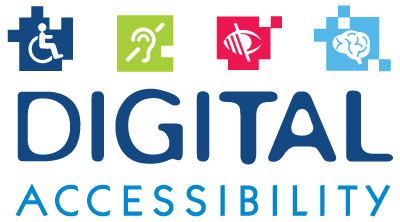What is accessibility?
Accessibility is the ability to design products and devices that are accessible for people with disabilities. The Americans with Disabilities Act was passed by the United States Congress in 1990. The ADA requires that both public and private spaces are made accessible to persons with disabilities. This includes, but is not limited to:
- Sensory impairments
- Cognitive impairments
- Limitations in physical strength
The ADA mandates that on-ramps be used as an alternative to a staircase for people who use a wheelchair. Stop lights are also required to use colors of yellow, green, or red which can be easily spotted by people with visual impairments (such as color blindness). The ADA has made it mandatory for public and private spaces alike to adopt accessibility best practices. However, digital accessibility or accessibility in digital media like websites and mobile applications has remained largely unexplored. We’ll be discussing digital accessibility and its importance on the Internet in this article.
What is Digital Accessibility?
While digital accessibility is a specific term that refers to digital media, it’s still a general concept of accessibility. However, accessibility requirements in digital media can be very different.
Some examples include, but are not limited to:
- Screen readers are software that allows users with visual impairments to navigate websites.
- Website videos are captioned to accommodate people with hearing impairments
- Individuals with visual impairments can use images that include “alt text”.
- Websites should be accessible by keyboard to users who are not able or unable to use a mouse.
These examples are only a small portion of the digital accessibility features that websites and mobile apps can offer. The Web Content Accessibility Guidelines 2.0 (WCAG) is the global standard for digital accessibility. According to WCAG’s abstract, WCAG covers a broad range of recommendations to make Web content more accessible.
Why is digital accessibility important?
Evolving Technology
The ADA was passed in 1990 when the Internet was still evolving and growing. The popularity and accessibility of the Internet have increased dramatically since then. New technologies will continue to evolve, and the access methods that they use will need to be reviewed.
Legal Ramifications
The Internet’s popularity explosion has highlighted the importance of websites and other digital media. It has also pushed the ADA to new heights. Do the statutes of the ADA include digital media? The U.S. Department of Justice believes so: “[T]he Department considers websites to be covered under Title III despite there not being any specific technical requirements for websites in the regulation or ADA Standards.”
In the past, accessibility suits focused on the lack of ramps and braille signs. Accessibility lawsuits today also focus on accessibility in digital media. This emphasizes the user demand for accessibility best practices.
Capturing Total Markets
The Internet has become so popular that more than 80% are shopping online. This is a staggering number, and one that was not possible before the internet became widely used. Individuals with physical impairments may find it easier to shop online than in the past. Online shopping can be difficult for people with visual or hearing impairments. Inaccessibility can make it difficult for them to shop online. This can also be a problem for business owners as it means they are not able to reach the entire market. It is a sign of how digital accessibility is better for businesses.
New Jobs
In the job market, there is a recognition that accessible web design is good business. Searching “web accessibility” in job search sites like LinkedIn and Indeed will show you the vast array of job opportunities for web designers, developers, and UI designers.
Universal Design Benefits All
You read earlier about an example of an ADA mandate. On-ramps must be accompanied by staircases in order to accommodate people with physical impairments. This mandate does not only benefit people with physical impairments. It also benefits those who use baby strollers and bicycles. Digital accessibility is the same. When images aren’t loading due to connectivity issues, alt tags can help users. Your website’s ranking in search engines can be improved by adding more semantic HTML tags to images and captions. These provide more information to the search engine about what your site has to offer. Accessibility (digital and otherwise) can help improve user experience by incorporating universal design.
Conclusion
Accessibility, previously a concept that was limited to public and private spaces, is now applicable to digital environments, due to widespread adoption of a new technology, the Internet. Accessibility is being redefined by new technologies, litigation, business strategies, among other factors. This definition now includes digital media such as websites and mobile apps. It is imperative that web developers include elements of digital accessibility as the Internet continues to offer digital solutions to a wider audience.

